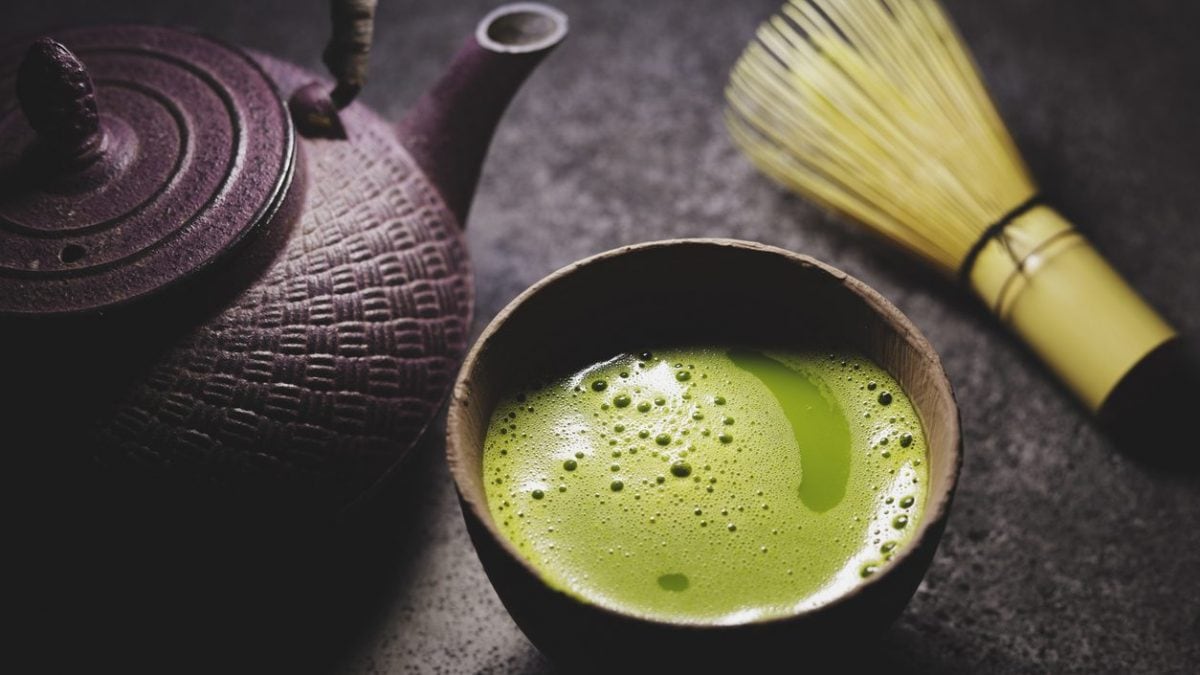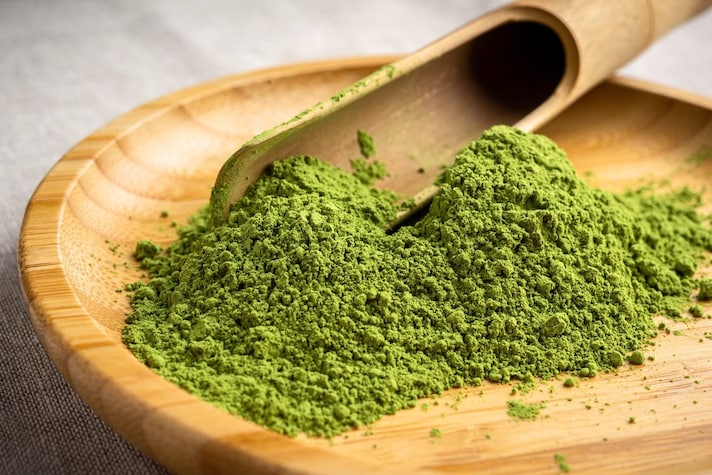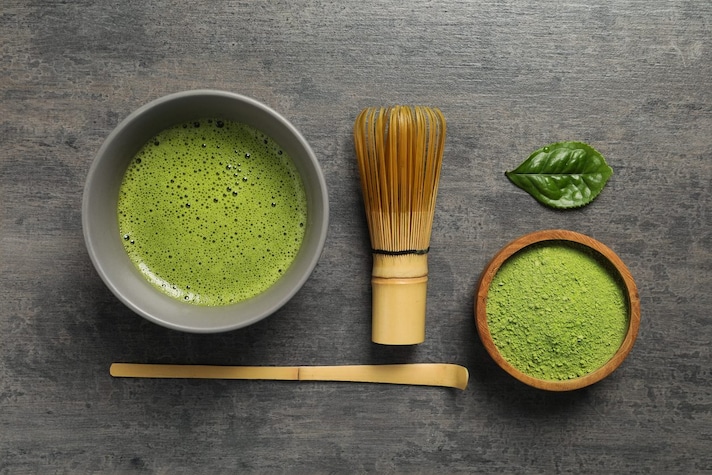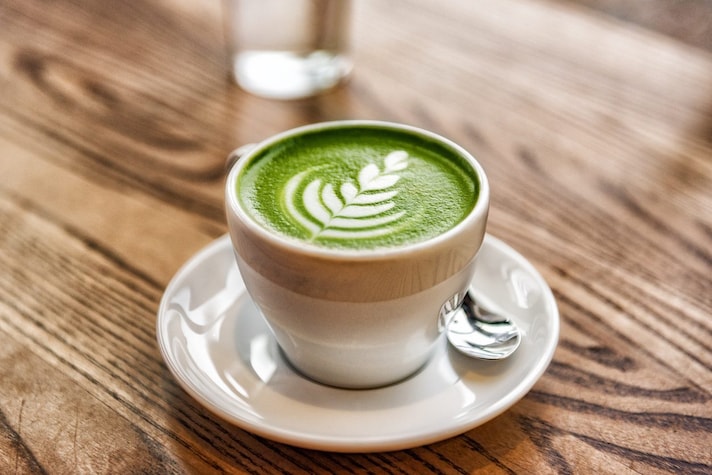
Matcha tea (pronounced maccha) is probably one of the most well-known and widely used Japanese foods in the world. It is a type of tea with a bright green color, a much less bitter flavor than green tea, and a remarkable number of benefits. Despite being a key ingredient in Japanese cuisine, this wonderful ingredient actually originated in China. And how did it arrive in Japan? We'll tell you all about it, along with its characteristics and precise preparation methods.
From China to Japan
Matcha tea, commonly associated with Japanese culinary tradition, originates from China: it seems in fact that it was "discovered" by some Japanese Buddhist monks who understood its charm, improving the cultivation and processing techniques. In particular, it was the Buddhist monk Eisai who brought some seeds of Camellia sinensis, the plant from which matcha tea derives, to the Land of the Rising Sun, around 1180 AD. The reason why it was imported by a monk is not a mere coincidence: in fact, the tea, thanks to its stimulating properties, helped the monks stay awake during hours of meditation.
How is It Produced?
The cultivation process of this plant follows precise rules, and it is essential that they are respected to obtain a good, high-quality product. First of all, for the production of matcha, plants from the Yabukita, Saemidori, Okumidori, and Gokou cultivars are used, which cannot be grown everywhere, but only in certain specific cities and prefectures, such as Uji (Kyoto), Kagoshima, and Nishio (Aishi).
Matcha is made from leaves grown only in the spring months and only out of direct sunlight. This is because the shade promotes increased chlorophyll production in the plant, giving it its bright green color and a healthy dose of antioxidants. The leaves are harvested by hand, then steamed to preserve their nutritional and organoleptic properties. They are then left to dry and cool. At this point, the leaves are called tencha and are finely ground using stone mills or metal machines, resulting in a very fine powder of a deep green color.

A Real Ritual: The Preparation of Matcha Tea
In Japan, preparing tea is no joke: there's actually a ceremony called Cha no yu (literally "hot water for tea"). This ritual often features matcha tea, which also requires a series of specific utensils: the chawan, a wide-bottomed tea cup; the chasen, a bamboo whisk; and finally, a chasaku, a bamboo spoon.
First of all, it's important to specify that matcha tea is prepared by suspension, not by infusion: this means that unlike all teas and herbal teas, the powder must not be left to infuse in hot water, but must be stirred. To do this, you need to use a chasen, or whisk, because a teaspoon would risk not dissolving the powder well and causing it to rise to the surface.
To prepare matcha tea, start by adding a teaspoon of powder to a cup and pouring 40 ml of water at a temperature of 167-176°F/75-80 °C. It's important that the water isn't too hot, otherwise it risks burning the powder. Continue stirring with the chasen, creating a "w" shape to incorporate air and form the characteristic foam. Finally, add another 40 ml of water at the same temperature until a surface of small bubbles has formed and the powder has completely mixed with the water.

The Different Types of Matcha Tea
As we've already mentioned, original matcha tea is produced only from specific cultivars and only in certain cities. However, there are different types of matcha: the first distinction concerns quality, determined by the time and method of cultivation; the second is based on the quantity of matcha used.
As for quality, there are two types of matcha tea: ceremonial grade and culinary grade.
- Ceremonial matcha is undoubtedly the highest quality, obtained from leaves grown with the utmost precision: the most attention to detail is paid during the harvesting and processing, so as to obtain a fresher, more delicate and smoother ground matcha; it is usually drunk on its own, without the addition of sweeteners or other additives.
- Culinary matcha, on the other hand, can often be obtained from a mix of matcha powder obtained from the leaves of different plants, which is why it is lower in price: it has a slightly duller color, the powder is coarser and lends itself well to being mixed with other ingredients, such as milk, or can also be used in the preparation of cakes and biscuits.
A second distinction concerns the quantity of powder inserted into the bowl: koicha (“thick tea”) is obtained from a larger quantity of powder, around 3.5-5 grams, and therefore results in a denser and stronger tea; usucha, translated as “thin and clear tea” is prepared with a smaller quantity of tea, 1.5-2 grams, and therefore results in a more liquid tea, very similar to a cappuccino or an espresso.

As Good as It Is Healthy
Matcha tea is gaining increasing popularity due to its wealth of beneficial properties. Extraordinarily rich in vitamins, minerals, and antioxidants, it has incredible diuretic and detoxifying effects. Furthermore, thanks to its high chlorophyll content, it has anti-inflammatory and liver-protective properties, helps fight free radicals, and acts as a powerful natural anti-aging agent. An excellent ally for boosting concentration, it's a great coffee substitute, strengthens the immune system, and has a positive effect on cholesterol levels. Last but not least, it's recommended for those following a low-calorie diet: it helps reduce hunger, contributing to a greater sense of satiety.
;Resize,width=767;)
